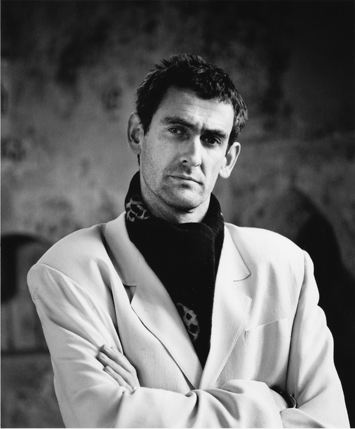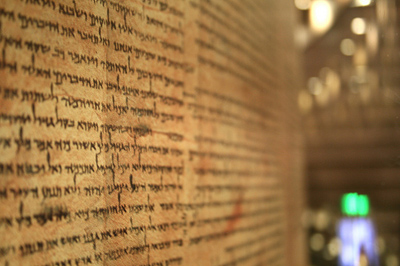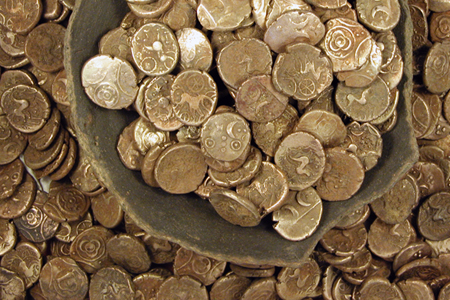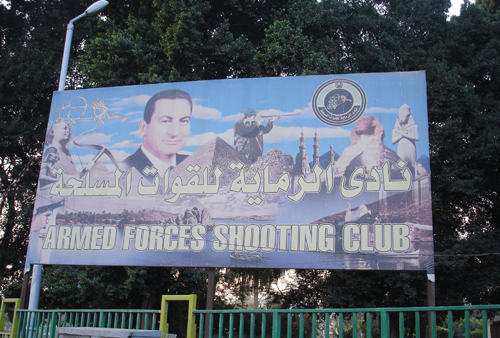Question – who can completely fill up a cavernous 1,500 seat domed hall on a Saturday night in Toronto? Answer – Dr. Zahi Hawass “I don’t get to introduce rock stars,” said Art Gallery of Ontario CEO Matthew Teitelbaum. Well tonight he did. Forget the critical New Yorker article, the mixed reviews of the new Tut exhibition at the Art Gallery of Ontario, or the fact that local Toronto media largely stayed away from this lecture. The world’s most well-known Egyptologist completely filled Convocation Hall, with people who had all paid a small admission fee (no more than $18) to…
-
-
There’s no doubting the natural durability of cave and rock art – in many cases ancient paintings, carvings and sculptures have resisted tens of thousands of years of the withering effects of history and the elements to still be around to reveal their splendor today. Yet, that’s not to say that their continued survival is guaranteed, particularly as many sites become more and more popular as tourist attractions and therefore increasingly subject to human wear and tear. Other examples simply don’t have the protection they need and are at the mercy of vandals and robbers, while some are threatened by…
-
The ancient Egyptians weren’t the only ones that mummified their dead for the sake of posterity. In more modern times, there have been multiple examples of mummification, using a range of weird and wonderful techniques from simple embalming to submerging the cadaver in a chemical-filled preservation tank, or perfusing it with wax, effectively rendering the corpse a giant human candle. Here we examine ten of the most famous examples of modern mummies, their stories, and some of the methods used to preserve them for eternity. The deceased range from an Argentinean First Lady, a Soviet Head of State and various…
-
Jon Cannon Expert and writer on British heritage Jon Cannon writes about old places in general and teaches medieval architectural history in particular. He teaches at the University of Bristol and frequently gives talks and leads tours on the subject. He has also published several articles on Avebury, and contributes a regular profile of a historic area – from ancient prehistory to 20th century heritage – to British Archaeology magazine. He has worked in the heritage industry for nearly 15 years, including working for the Royal Commission on the Historical Monuments of England, and English Heritage. He went freelance in…
-
Curator specializing in King Tut Dr. David P. Silverman serves as the curator, advisor and academic content creator for the exhibition Tutankhamun and the Golden Age of the Pharaohs. This exhibit truly completes a full circle for him; in 1977, he was in charge of curatorial content for the exhibition Treasures of Tutankhamun at Chicago’s Field Museum. He also co-authored the text panels and labels that traveled around the United States with the exhibition, which attracted an unprecedented 1.8 million visitors in its run at the Metropolitan Museum of Art in 1979 and inspired the phenomenon known as ‘Tutmania’. A…
-
In 2009, we saw the Terracotta Warriors tour America, racking up record attendance figures, while King Tut exhibitions criss-crossed the globe and the Staffordshire Hoard went on show in London just months after being unearthed in a West Midlands field by an avid metal detectorist. 2010 looks set to be equally as big a year for heritage exhibitions around the world. The iconic and controversial Lewis Chessmen will be reunited in Scotland for the first time in over 150 years in Edinburgh this May. The massive Shanghai World Expo will open around the same time, with a number exhibits themed…
-
From May 3rd until June 10th, the Ipswich Museum is hosting a free sneak preview of 2,000-year-old Iron Age gold coins once belonging to Boudicca’s Iceni tribe. The 200 coins on display are part of the Wickham Market hoard, discovered in 2008. The Wickham Market hoard consists of 840 Iron Age gold coins which makes it the largest the largest hoard of its type found in Britain since 1849 (and is featured in our Top 10 Metal Detector Discoveries). Almost all of the coins belong to the Iceni tribe but five of them were ‘issued’ by a neighbouring tribe from…
-
I have spent the majority of the last 6 years working between Egypt and London; during this time my archaeological career has changed track somewhat from working on heritage protection strategies in Luxor to assisting media production companies in producing documentaries set in the historical realm. The journey from archaeologist to televising producer has enabled me to travel both metaphorically and physically between the worlds of the media and archaeology while attempting to be part I hope of both, a sometimes difficult undertaking. Generally I spend most of the year, some eight or nine months in Egypt during the archaeological…
-
I have spent the majority of the last 6 years working between Egypt and London; during this time my archaeological career has changed track somewhat from working on heritage protection strategies in Luxor to assisting media production companies in producing documentaries set in the historical realm. The journey from archaeologist to televising producer has enabled me to travel both metaphorically and physically between the worlds of the media and archaeology while attempting to be part I hope of both, a sometimes difficult undertaking. Generally I spend most of the year, some eight or nine months in Egypt during the archaeological…
-
Key Dates Led the Iceni revolt against the Romans in 60-61 AD. Relationship People Partners Prasutagus Boudica, also known as Boudicca and Boadicea, was a queen of the Iceni tribe which was based in the modern county of East Anglia in England (Watch the Ancient World in London video about Boudicca). VIDEO: Episode 6: Boudicca, Warrior Queen Her husband, Prasutagus, was king of Iceni and was an ally of the Roman occupiers of Britain. When he died, his will stipulated that his kingdom should be divided between his daughters and the Roman empire. The Romans flouted this completed by raping…







